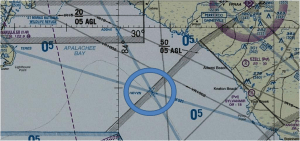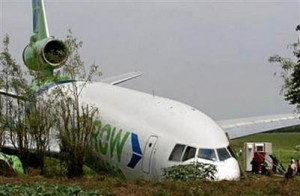 There is nothing quite like a heart attack and triple bypass surgery to get your attention.
There is nothing quite like a heart attack and triple bypass surgery to get your attention.
Even if you’ve been good, don’t smoke, don’t eat to excess, and get a little exercise, it may not be enough to keep a heart attack from interrupting your life style, and maybe even your life.
Post-surgical recovery can be slow and painful, but if you have an avocational passion, that passion can be motivational during the recovery period after a heart attack. There is something about the burning desire to return to diving, flying, or golfing to force you out of the house to tone your muscles and get the blood flowing again.
My return to the path of my passions, diving and flying, began with diet and exercise. My loving spouse suggested a diet of twigs and leaves, so it seemed. I can best compare it to the diet that those seeking to aspire to a perpetual state of Buddha-hood, use to prepare themselves for their spiritual end-stage: it’s a state that looks a lot like self-mummification. Apparently those fellows end up either very spiritual or very dead, but I’m not really sure how one can tell the difference.
The exercise routine began slowly and carefully: walking slowly down the street carrying a red heart-shaped pillow (made by little lady volunteers in the local area just for us heart surgery patients). The idea, apparently, is that if you felt that at any point during your slow walk your heart was threatening to extract itself from your freshly opened chest, or to extrude itself like an amoeba between the stainless steel sutures holding the two halves of your rib cage together, that pillow would save you. You simply press it with all the strength your weakened body has to offer against the failing portion of your violated chest, and that pressure would keep your heart, somehow, magically, in its proper anatomical location.
I am skeptical about that method of medical intervention, but fortunately I never had occasion to use it for its avowed purpose.
Eventually I felt confident enough to ditch the pillow and pick up the pace of my walks. In fact, I soon found I could run again, in short spurts. It was those short runs that scared the daylight out of my wife, but brought me an immense amount of pleasure. It meant that I might be able to regain my flying and diving qualifications.
Three months later I was in the high Arctic with good exercise capability, and most importantly the ability to sprint, just in case the local polar bears became too aggressive on my nighttime walks back from the only Ny-Alesund pub.

After that teaching adventure, I prepared myself for the grinder that the FAA was about to put me through: a stress test. Not just any stress test mind you, but a nuclear stress test where you get on a treadmill and let nurses punish your body for a seeming eternity. Now, these nurses are as kindly as can be, but they might well be the last people you see on this Earth since there is a small risk of inducing yet another heart attack during the stress test. Every few minutes the slope and speed of the treadmill is increased, and when you think you can barely survive for another minute, they inject the radioisotope (technetium 99m).
With luck, you would have guessed correctly and you are able to push yourself for another long 60-seconds. I’m not sure exactly what would happen if you guess incorrectly, but I’m sure it’s not a good thing.
And then they give you a chance to lie down, perfectly still, while a moving radioisotope scanner searches your body for gamma rays, indicating where your isotope-laden blood is flowing. With luck, the black hole that indicates dead portions of the heart will be small enough to be ignored by certifying medical authorities. (An interesting side effect of the nuclear stress test is that you are radioactive for a while, which in my case caused a fair amount of excitement at large airports. But that’s another story.)
The reward for all the time and effort spent on the fabled road to recovery, is when you receive, in my case at least, the piece of paper from the FAA certifying that you are cleared to once again fly airplanes and carry passengers. With that paper, and having endured the test of a life-time, I knew that I’d pass most any diving physical.

Having been in a situation where nature dealt me a low blow and put my life at risk and, perhaps more importantly, deprived me of the activities that brought joy to my life, it was immensely satisfying to be able to once again cruise above the clouds on my own, or to blow bubbles with the fish, in their environment. Is there anything more precious that being able to do something joyful that had once been denied?

Without a doubt, the reason I was able to resume my passions was because I happened to do, as the physicians said, “all the right things” when I first suspected something unusual was happening in my chest. The symptoms were not incapacitating so I considered driving myself to the hospital. But after feeling not quite right while brushing my teeth, I lay down and called 911. The ambulance came, did an EKG/ECG, and called in the MI (myocardial infarction) based on the EKG. The Emergency room was waiting for me, and even though it was New Years’ eve, they immediately called in the cardiac catheterization team. When the incapacitating event did later occur I was already in cardiac ICU and the team was able to act within a minute to correct the worsening situation.
Had I dismissed the initial subtle symptoms and not gone to the hospital, I would not have survived the sudden onset secondary cardiac event.
The lesson is, when things seem “not quite right” with your body, do not hesitate. Call an ambulance immediately and let the medical professionals sort out what is happening. That will maximize your chances for a full and rapid recovery, and increase the odds of your maintaining your quality of life.
It will also make you appreciate that quality of life more than you had before. I guarantee it.










